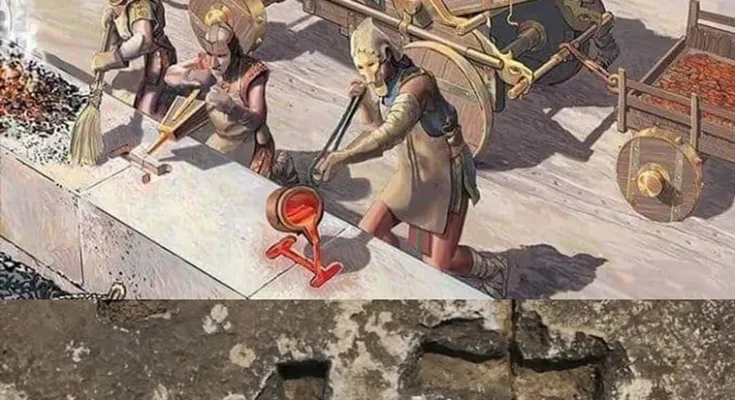The most impressive feats of modern engineering tend to happen at the subatomic level, but ancient architects and builders were working in an era before theories of quantum mechanics and special relativity came to prominence. Ancient engineering had so few of today’s technologies but created many impressive results, especially in architecture. Here are some of the most impressive examples of ancient engineering in architecture.
The construction of metal clamps that hold giant stone blocks together. There are structures that have stood for thousands of years are still standing.

Method of heating in ancient Rome baths and public buildings
Method of heating was used in ancient Rome baths and public buildings, using a Hypocaust. The hypocaust is essentially a centralized heating system that produces hot air under the flooring of the room, which could also be transmitted to the walls using a series of pipes. It is considered the world’s first central heating.

5,000-year-old Peruvian technology
Shicras are a type of woven vegetable fiber baskets filled with stones that were used as an anti-seismic foundation system for the buildings of the Caral-Supe civilization in Peru. The technique is over 5000 years old and served to dissipate seismic energy during earthquakes

Bridge 77 on Macclesfield Canal (Lambert’s Lane)
Snake bridge over the Macclesfield canal allowed the towpath to cross the canal without the horse being unhitched from the narrowboat it was pulling. This often involved unhitching the tow line, but on some canals, they were constructed so that there was no need to do this by placing the two ramps on the same side of the bridge, which turned the horse through 360 degrees. On the Macclesfield Canal, this was achieved by building spiral ramps and on the Stratford-upon-Avon Canal and others by constructing roving bridges of iron in two cantilevered halves, leaving a slot in the middle for the tow rope. This was also called a split bridge. For cost reasons many ordinary Stratford bridges were also built in this way as they had no towpath.

An Inca stone bridge at the archaeological complex of Huarautambo in Peru. The complex was built during the government of Pachakutiq Inka Yupanki

The photo shows Roman pedestrian crossings in Pompeii – stone blocks arranged across the street. These are the prototypes of today’s “zebra crossing”.

In Roman times, the so-called ′Tiger Eyes′ small white stones were placed among the stones on the road so that they could be seen at night.

The main layers of a Roman road
Roman engineers built 29 major highways which emanated from Rome; these were fed by smaller localized roads. The Roman highways were paved with stones, with a central high point to facilitate drainage, and with culverts and footpaths running alongside them. By the 2nd century CE over 250,000 miles of paved roads stretched throughout the Roman Empire, an enormous engineering achievement. Thousands of miles of roads today follow the routes built by the Romans, often built directly above their ancient counterparts. In many cases, the pavement set by the Romans is still used by 21st-century travelers.

Sweet Track
The Sweet Track is a 5830-year-old Neolithic timber walkway, located in the Somerset Levels in England and discovered in 1970. It was originally part of a network of tracks built to provide a dry path across the marshy ground.

Norias of Hama
The Norias of Hama are a series of 17 norias, historic water-raising machines for irrigation, along the Orontes River in Hama, Syria. They are notable for their medieval origins and for the enormous size of two of them, which were for nearly 500 years the tallest waterwheels in the world

Ottoman architect Mimar Sinan integrated this rotating piece into the mosque he designed. The building had serious structural damage if it couldn’t be turned after an earthquake.
Ancient roman lead pipes in Bath, England. Some of them are still in use. 2000 years old.

Ceramic water pipes found near Epang Palace. China, Warring States, 5th-3rd century BC

Byzantine-geared mechanical calendar
This amazing Byzantine geared mechanical calendar is the second oldest known of its kind after the Antikythera Mechanism. The device could tell the time in 16 locations and would have been able to predict the positions of the Sun and Moon. 400-600 AD

Ancient Windmills of Nashtifan, Iran
In the small village of Nashtifan, Iran, some of the oldest windmills in the world still spin. Made of natural clay, straw, and wood, the windmills have been milling grain for flour for an estimated 1,000 years

The 2nd century CE Roman Barbegal watermill complex
The 2nd century CE Roman Barbegal watermill complex, a unique cluster of 16 waterwheels in southern France, was the first known attempt in Europe to set up an industrial-scale complex of machines. The mills had an estimated production capacity of 25 tonnes of flour per day





